Other than Netflix and Crunchyroll, did you know there are streaming sites devoted to giving you the finest anime experience? HIDIVE is a streaming platform that caters only to anime fans! Although it is a lesser-known anime service that has been available since 2017, it has been adding a greater number of exclusives content in recent years.
It’s crucial to clarify from the beginning that this list won’t place a strong emphasis on exclusives. The main reason for their inclusion is that these programs are accessible to HIDIVE subscribers, even if they also become available on other streaming services. All of the anime on these lists are appropriate for watching with children when the family is commemorating a special event and don’t have a mature rating.
Anime has a wide range of variety in them that will be unexplored even if we spend our entire life to watch them. This list consists of wide categories, from a slice of life to action.
Made in Abyss, it will connect with your heart so much that it makes you cry. The protagonist, Bloom into You, has a plot of school teen and their problems and many more. All these short synopses covered here are spoiler free.
1. Princess Principal
Princess Principal creates right away that the show is a steampunk one set in Victorian London. It helps that I enjoy the Victorian-era aspect. And the use of steampunk technology isn’t all that deep. The flight was achievable by the time it occurred by the Wright brothers because this fits with their timeline, but I’m getting off-topic.
Britain takes off first, gaining military advantage, and it begins to grow. However, some ten (or seven?) years prior to the commencement of the program, the nation was divided into the Kingdom of Scotland and the Commonwealth due to internal unrest. The Commonwealth has ended the aristocracy, but the Kingdom remains a monarchy.
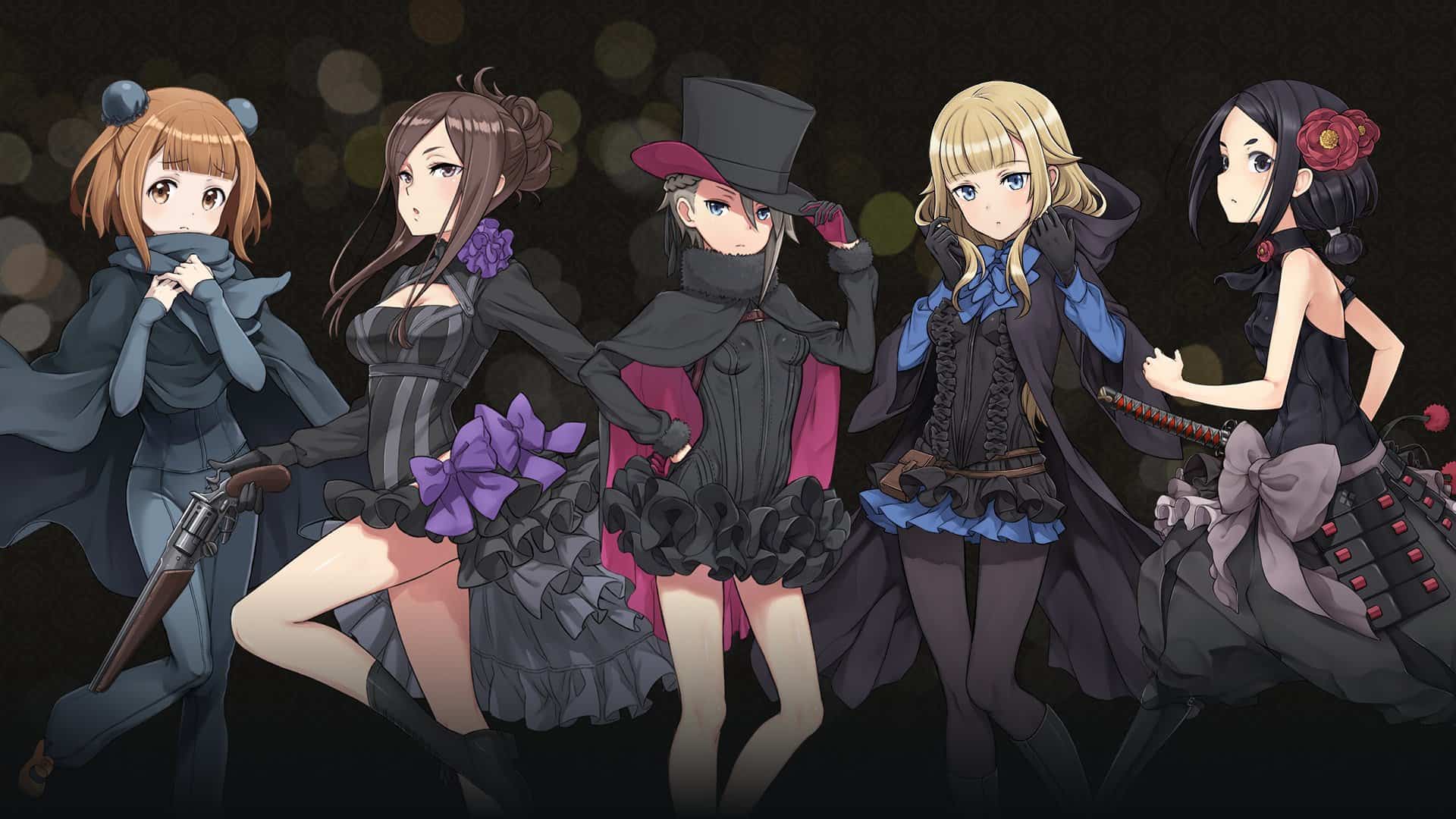
The cases in PriPri have been allocated numbers retrospectively and as episodes structurally. For instance, episode 2 is the first case, or case 1, in which Ange and Dorothy meet Charlotte, the princess of the Kingdom and in fourth place in line to claim the throne, and Beatrice, a low-ranking nobleman’s children who function as Charlotte and persuade their interests to work together and keep an eye for the Commonwealth.
The instances essentially are rather stand-alone for most of the episode. The segment of the episode with introduces “the girl from the Orient,” Toudou Chise, reveals the protagonist’s backstories. The washing mill story depicts the misery of everyday people. Still, other episodes are energetic as the girls take on riskier situations.
Also Read: Princess Principal: Busy Easy Money: What You Need To Know
2. Made in Abyss
Based on a current manga, Made in Abyss is a 13-episode anime broadcast that began in the summer of 2017. It tells about Riko, a 12-year-old orphan who longs to explore the Abyss, a fissure in the middle of her archipelago home that extends deep beyond the surface of the ground.
Riko nearly gets eaten while a dive into the first layer, but a cyborg who has forgotten his name saves her. Reg is given to him by Riko, and the two become fast friends. Then, Riko’s mother, who is believed to have survived her journey to the depths of the Abyss, sends a message to the surface telling Riko to go find her.
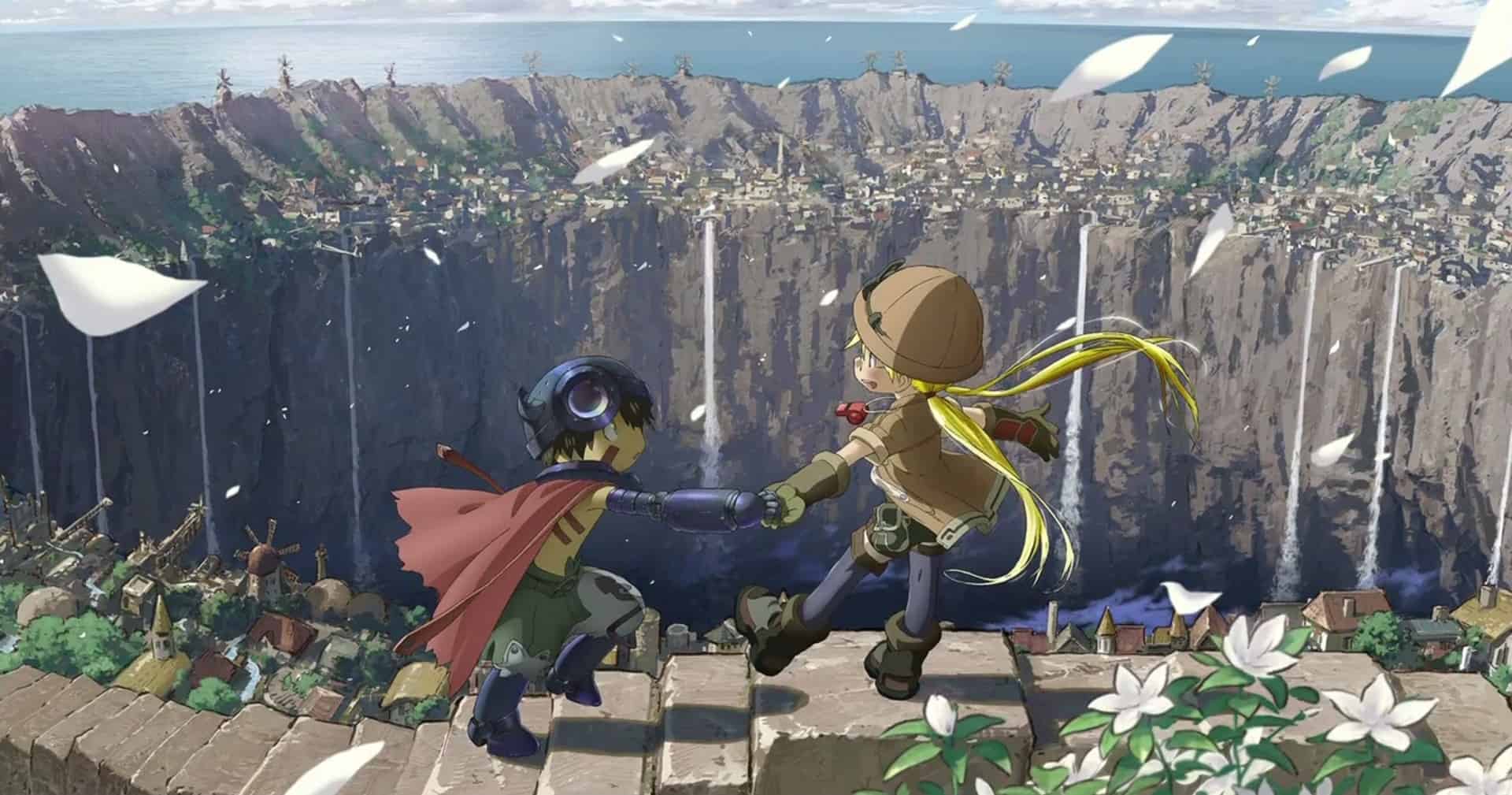
She also has a drawing in her notes that eerily resembles Reg. They both decided to start what is known as a Last Dive, diving into the Abyss from below without any intention of climbing back up. The central conflict of the story involves Riko and Reg making a Last Dive into the Abyss in search of Riko’s mother.
These children are clearly stated to be heading down with no expectation of returning; therefore, their exploration of the Abyss is a one-way excursion as they descend from layer to layer in the hope of reaching the bottom. In essence, the premise is an exploration novel, which the vibrant colors suggest will be enjoyable to read.
The Abyss and its effects are both shown to be dangerous in this, at times, darkly humorous series. It delves into the kind of society that the inhabitants of the area surrounding the Abyss have created, one that not only honors White Whistles’ passing but also permits kids to take risks with their lives. Not to mention that the cause of children’s deaths as their birthdays approach is a mystery.
Also Read: Made In Abyss Watch Order: Anime, Movies & Fillers
3. Bloom Into You
Being a freshman in high school, Yuu Koito investigates the student council and is immediately presented to the head of the council, Touko Nanami. Touko confides in Yuu that she has developed a love for her, much to the astonishment of both of them, before offering her a position as manager for the forthcoming presidential vote for the council.
High school romances in anime are already terrible, but they also heavily rely on the clichés that irritate me. Without being dismissive, but if that’s a way to phrase it, this would have had to be very fantastic for it to be worth witnessing twice as many anime girls “as”—and it was.
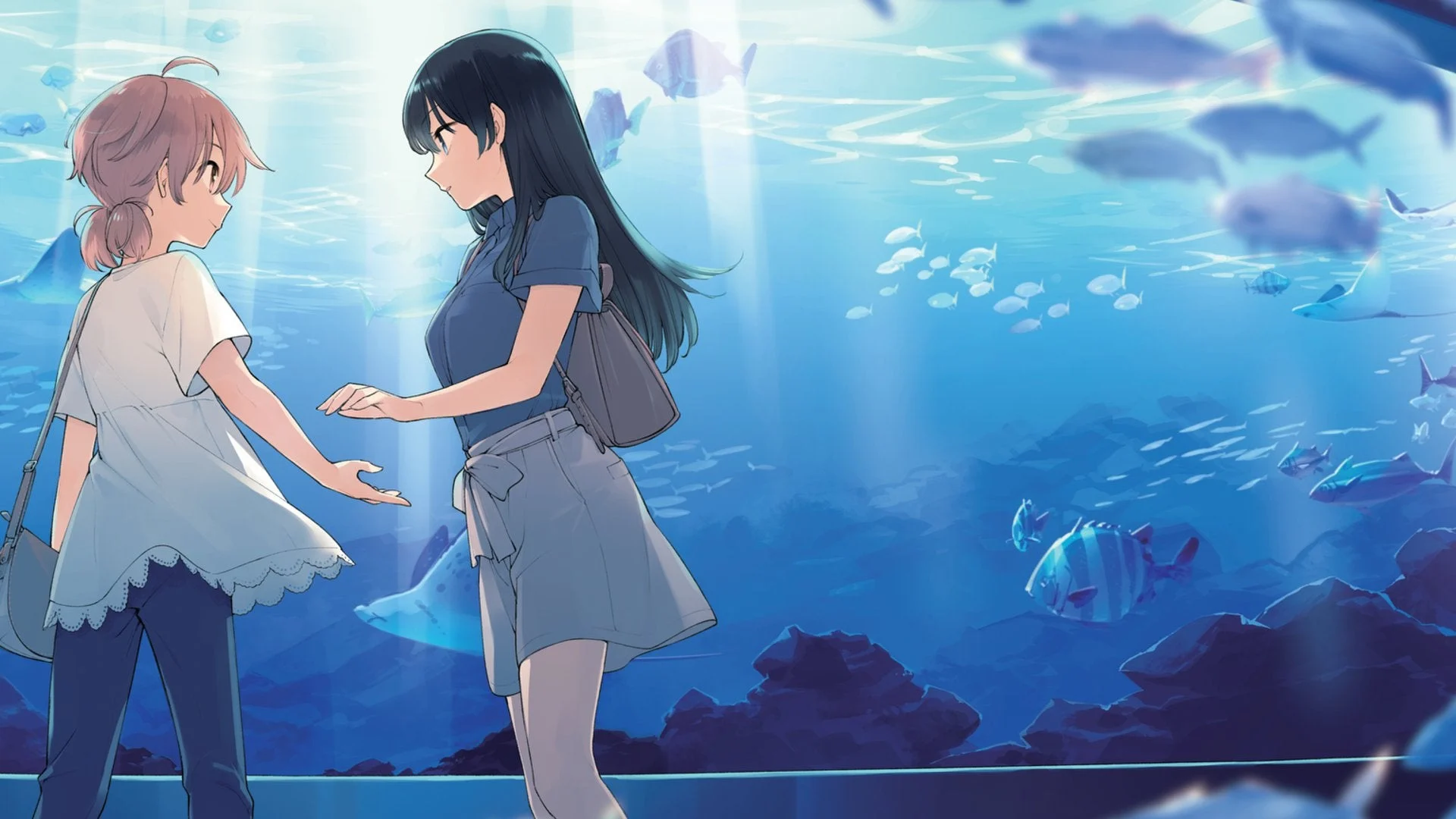
Even though the show follows the average style, the subtle yet influential usage of visual arts, sound design, and narration managed to instantly make me ill. ‘Bloom Into You,’ from ‘Re: Creators’ director Makoto Katou, explores the nuances of relationships from a perspective I haven’t seen in any other anime or other TV or movie, for that matter.
You is once more made aware of the fact that, despite her best efforts, she doesn’t appear to be able to fall into a relationship with someone as she professed to. Not right now, and certainly not after her former classmate requested her out sometime before.
As the concept of contemplating who you really are and who you want to be is explored, we watch as Yuu goes through what seems to be a protracted period of reflection on what it means for her and their connection with Nanami to not experience sexual attraction. I had never before seen such a strategy to romance, and it captivated me from the first few episodes.
Also Read: Where to Read Chainsaw Man After Anime? Manga Guide
4. Scum’s Wish
Hanabi Yasuraoka has started referring to her childhood buddy Narumi Kanai as her “big bro” because they are in love. When Hanabi enters high school, he becomes her teacher, but Narumi starts to show interest in a pretty girl teacher named Akane Minagawa.
There truly wasn’t something wrong regards the anime’s conclusion; it was entirely consistent with the author’s intended course of action. But I found this comic to be slightly excessively realistic. Because it isn’t realistic and allows me to escape reality, I enjoy reading manga and watching anime.

The common themes in this anime, such as infidelity, using others to gratify sexual and emotional needs and unanswered first love, in my opinion, frequently occur in real life and are unpleasant, so why even start a story around them unless you intend to offer people hope alongside a happy ending?
Unless there is an alternative ending, it seems senseless to even read the information you are able to encounter in real life. If you didn’t already predict, Hanabi and Mugi don’t end up dating despite having affection for one another. They make a contract to rely on someone else for mental and physical support because they will never be able to be with the person they love. Each of them struggles with their own emotional problems across the series.
If I had seen a time jump where they met and fell in love with one other in the future, or if they at least stayed friends and were present in each other’s life, I think I would have been alright with this. That would ultimately have seemed a realistic approach, as it frequently occurs in real life for people to first meet, run into a problem, and then be forced apart before reuniting later.
Also Read: 10 All-Time Best Adult Anime Series To Watch
5. Yona of the Dawn
Every romantic prospect that is throughout the story in Yona of the Dawn has a past that is swiftly revealed to the audience. It seems like a clumsy attempt to get my sympathy, but all it succeeds in doing is making me bored. These characters and I haven’t yet developed a relationship; therefore, I am not entitled to this degree of information.
A more gradual unveiling was what we desired. We wanted them to engage in complicated social interactions even while they struggled with issues. Each character was reared in a setting that ought to have caused them to clash pretty seriously. Instead of tackling real issues, the show focuses on trivial disagreements and spectacular backstories.
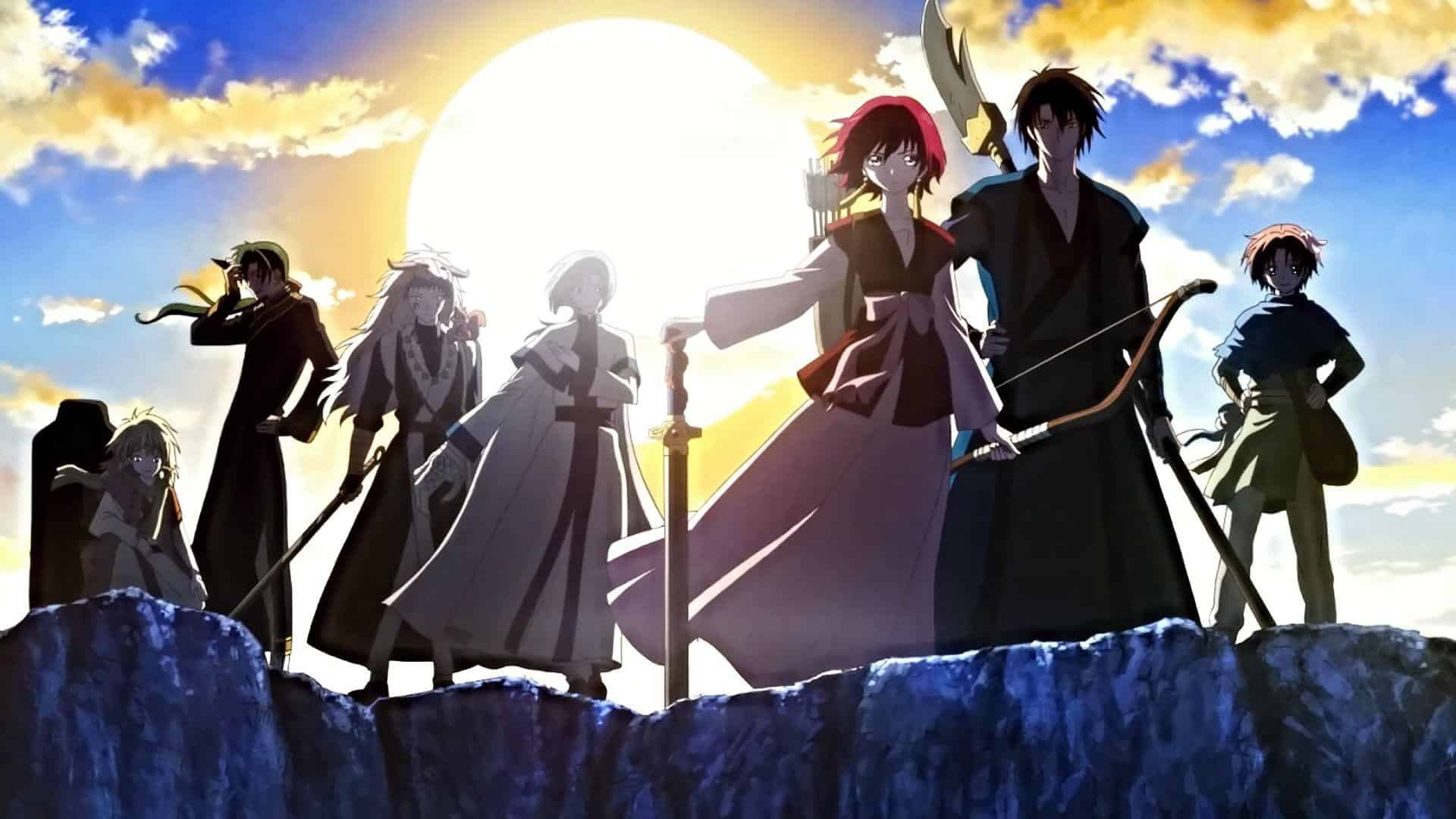
Both of things don’t necessarily indicate well-written relationships among teammates, which this program so far lacks. Despite being born and reared in somewhat segregated environments, everyone is, on the whole, incredibly accepting of one another’s differences.
The fact that those tragic backstories had so little impact on the story makes me wonder what the point was of presenting them to us. Although I’m sure they’ll be important eventually, the flashbacks may have been better placed until a later time. Frontloading the exposition almost led me to abandon the entire series.
The Dragons, Hak, and Yoon are also improved in this arc; instead of dwelling on the pasts they cannot change, they are acting in the moment to accomplish their objectives. In Yoon’s case, he ultimately admits that his small stature allows him to defend Yona in a way another individual cannot. A sensitive part of himself is revealed in a fresh way and, should it not have been accepted, at least used.
Also Read: Yona Of The Dawn Review: Is It Worth Watching?
6. The Garden of Sinners
In 1998, Kinoku Nasu published The Garden of Sinners (Kara no Kyoukai) as a light novel. Eight books and more than seven animated films have subsequently been produced, with one novel still unpublished and the eighth and final feature film anticipated to be released soon.
Shiki works for a detective company that looks into strange occurrences. Four female classmates commit suicide at the beginning of the film’s narrative. The three-man agency’s ostensible chief, Aozaki, believes that the suicides are related and attributes their causes to the paranormal.

The conceptual discourse drops are mostly in rhythm, so they make sense, but occasionally Aozaki veers off course and begins to sound like an unreliable audiobook. Regardless of the dialogue, there are brief stretches of talk in this movie’s script. When a narrative reaches its conclusion, the script then becomes lengthy.
The narrative flow in this film is very orderly and typical, but the lack of conversational speech throughout the story causes it to feel quite prolonged and ’empty’. The script succeeds in spreading out the plot just enough so that it isn’t painfully empty, and for a 50-minute film, the pacing is good. Basically, the story is clear and well-written—exactly what an introductory movie should be.
There are only four separate individuals in the cast, which I think could make for better character writing. However, this was not the case, as the majority of the time was spent focusing on Shiki rather than any of the other cast members, and I find it odd that there is no recollection in the movie.
On the other side, the background artwork is outstanding. The lighting in scenes may be played with expertly by Ufotable, and the fine line work undoubtedly contributed to the creation of the glossy, highly detailed painting that gives the animation a fantastic appearance. One of the movie’s best images is this one.
Also Read: The Garden of Sinners: Watch Order For the Movie Series
7. Beyond The Boundary
Beyond the power source Boundary was one of the most eagerly awaited performances of 2013. A slice-of-life mystical fantasy by KyoAni? What do you mean? That would be sufficient to get even skeptics’ attention. The audience favors Kyoto Animation when it comes to these kinds of stories.
They attempted to go above what they generally produce above the Boundary by including an actual plot, action sequences, and phantom creatures. Did it stand up to the anticipation despite how good it sounds? Once more, KyoAni’s eccentric protagonists make an appearance, this time as Kanbara Akihito, a character with a strange spectacles fetish and the ability to say some really witty things.
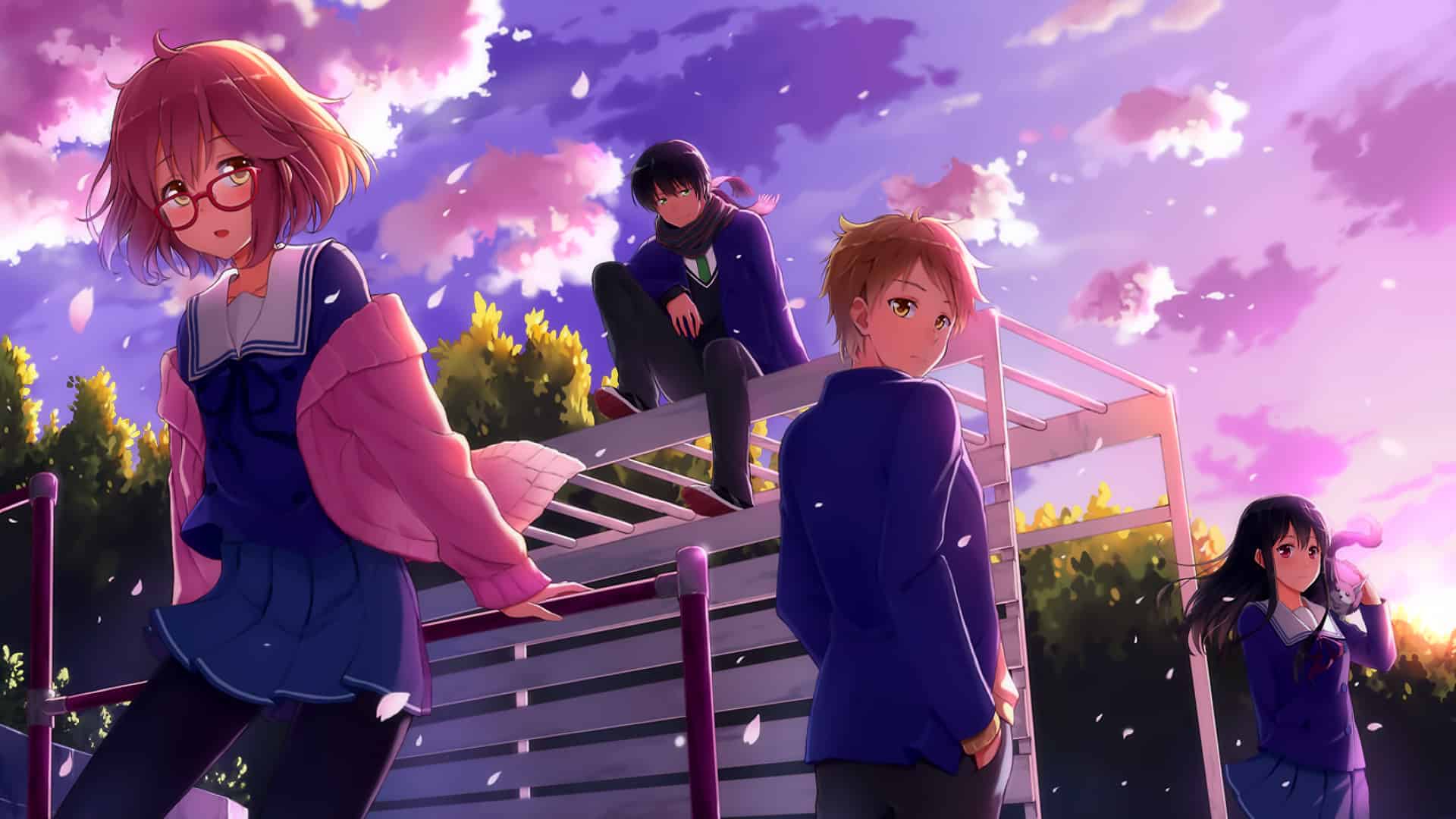
Kuriyama Mirai is wearing glasses, which may or may not be unrelated, making the two practically a perfect match from the beginning. While remaining within the confines of the main theme, this approach allows for humor and comedy.
The characters that are in this program are handled exceptionally nicely. I won’t go into unnecessary detail, but every protagonist (with the exception of Sakura, who has a stone face) has an individual personality and traits that not merely make them interesting but also lovable.
Yes, this even applies to the supporting cast. I also enjoy how certain characters have opposing viewpoints, which add contradictory elements to this narrative and advance the plot and character growth.
The antagonist was the lone character that wasn’t as fully realized or developed as the rest. In conclusion, we are still unsure of his or her genuine intentions. They don’t even receive much time onscreen at all, which stunts their growth and interest.
Also Read: Beyond The Boundary Anime Review
8. No Game, No Life
No Game No Life is an anime series that follows dark events, otherwise the brother-sister duo Sora and Shiro. However, when combined with Shiro’s incredibly high intelligence and Sora’s gaming prowess, they constitute a great tag-team team for the realm of video game play and can immediately defeat anyone in their path.
One day, the god Tet, a mystery messenger, notices their intellectual prowess and draws them onto the world of Disboard, where gaming is important means of settlement of disputes, and the Ten Pledges have been put in place to regulate it.

After the death of their protector, the King of Spade’s resemblance to a pack of playing cards, Elkia, has become abandoned and falls behind in terms of gaming superiority. At some point, Sora and Shiro’s gaming prowess leads them to take on the rulers.
Along with their new allies, Jibril, a kind-hearted being, and Stephanie Dola, the grand-daughter of the earlier king and the successor to the throne, they take on a task to erase Stephanie’s grandfather’s lasting impact and restore Elkia to its earlier beans glory by defeating all of its rivals in the surrounding lands.
Shiro and Sora, for example, are to No Game No Life what Yugi is to Yu-Gi-Oh: formidable strategists who can devise to BS make sense out of any situation, regardless of how illogical it is.
To be perfectly honest, this anime nearly makes me think of a poorly written, self-glorifying fanfiction about a person who becomes King and simply guides their army to conquest without pushback.
Also Read: 20 Best ‘No Game No Life’ Facts You Must Know
9. Vinland Saga
It takes some time for Vinland Saga, the most recent anime from Wit Studio, to get going. Thors is an obvious leader in his little Icelandic town because he is a behemoth who towers over the next Viking with his head, shoulders, and much of his torso.
Before the third episode informs us that his talents as a former fighter are required, he wanders around trying to solve a few problems while the plot oozes to us, showing over-exaggerated attributes of kindness and pacifism.

The narrative modified to his son is a little rambling because Thorfinn lacks any qualities of a protagonist; the purely personal murder of Thors becomes what is the only tangible thread our hero has to work with. This is when the real narration starts. However, such a storyline is also not entirely true.
The initial preparation for Vinland Saga takes place over four episodes, yet by the time the twenty-fourth episode arrives, the drama feels like it has only just begun.
Even though it’s obvious I’m going to call Vinland Saga slow—because, in fact, it is, and that’s frequently advantageous for Vinland Saga—it’s more crucial to note that this animated series meanders just its prologue–prologue episodes.
On the surface, prologues ignore regular narratives in order to put the actors in the right positions to convey the story the author truly wants to tell. As a result, each chapter of Vinland Saga feels like an agonizingly long prologue.
For the first ten or so episodes, Thorfinn is developed from a brash into a murderous machine and then added to the crew of Askleadd, the man who killed his father. It’s an intriguing set-up because he has to help the person he most wants to kill in order to confront someone.
Also Read: 25 Best Vinland Saga Facts You Might Not Know
10. Parasyte: The Maxim
The main points are materialism and instinctive survival with human nature; Parasyte explores a variety of subjects that call into question humanity’s right to be the most powerful species from an overall societal and philosophical perspective.
The unsuccessful merging of the unnecessary elementary school environment and romance, despite the film’s great qualities, the shoddy presentation, the looseness of the theme, and the careless handling of the extras, keep it from being the gratifying experience that it could be.

An alien takes control of Shinichi’s right hand, leaving him fighting for his life in the heart of a conflict between humanity and its parasites. It’s up to Shinichi and Migi to repel these invaders because his mentally abused fiancée relentlessly dehumanizes him, the aliens are getting aware of his existence, and the national police are helpless to stop them.
The first few episodes of Parasyte develop the mental state of Shinichi and his new hand-alien Migi, introducing a species of enigmatic. Secular “Parasytes” show a string of horrifying murders, all while moving along at a repeatedly brisk keeping up while retaining a sense of purpose.
Set out to be a gory, bloody, psychological thriller with intense action, a high school romance (or something similar), and a show that explores humanity’s right to kill others for its own survival and supremacy. For the first three months, Shinichi goes through mental and physical growth.
Also Read: Anime to Watch If You Liked Parasyte: The Maxim
11. Flip Flappers
Flip Flappers appears to be your typical forgettable magical girl program from 2006 at first glance, but as you continue to watch it, especially after the pilot, you start to realize how unique and amazing Flip Flappers is. Flip Flappers is primarily a teenage year and escapade story with lovely colors, endearing characters, and appealing metaphors.
Flip Flappers’ first half is like seeing two adorable girls embark on a voyage to many planets, mingle with the setting, gain important life lessons, and then return to their home world like distinct characters.
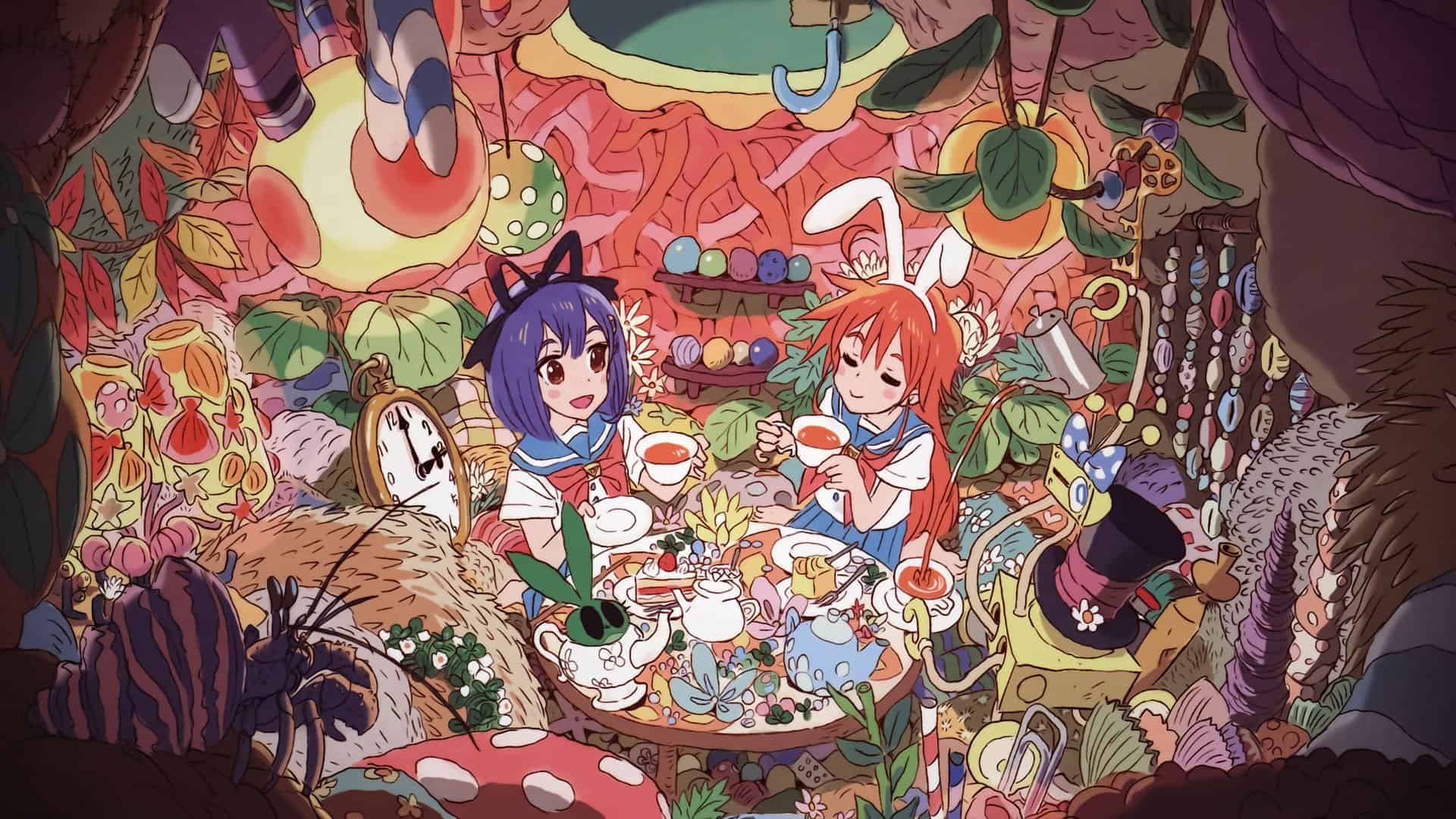
This is unquestionably the best part of the Flip Flappers a tale for the reason that it not only shows how well the growing-up elements of the story work with the show’s enticing symbolism, but it also highlights many important concepts and implications that help Conona and Papika’s characterization.
Generally speaking, the second third is comparable to the first, but it began by establishing its core themes and plot points. Not to add that Flip Flappers now completely abandons its episodic framework and becomes a character-driven series.
Growing up, puberty, appreciating one another, and sexuality are just a few of the issues that Flip Flappers tackled, and both of these were all expertly handled in the anime.
Spoilers aside, the series has somewhat lost its original distinctive qualities. The shows attempted to add a lot of new storyline components that had not been covered before, but sadly, these new plot elements failed because of the lackluster episode determined, which was insufficient to fully develop the new story elements.
Also Read: Top 25 Anime Series to Watch on Apple TV
12. Princess Tutu
Katou Nanae portrays Ahiru, a simple duck in Princess Tutu, whose identity is one day converted into a human girl by the mysterious Drosselmeyer (Noboru Mitani). After obtaining an egg-shaped pendant that transforms her into the graceful Princess Tutu, a tale about her begins to take shape as she strives to restore the broken, lost heart of the princess she loves and admires.
The main cast of Princess Tutu is undoubtedly one of the show’s strongest points, and it works for it to center them in the way that tales do. In addition to them, the show uses a small number of supporting characters, but their roles are generally minor, and they largely serve the show’s episodic growth or light humor.
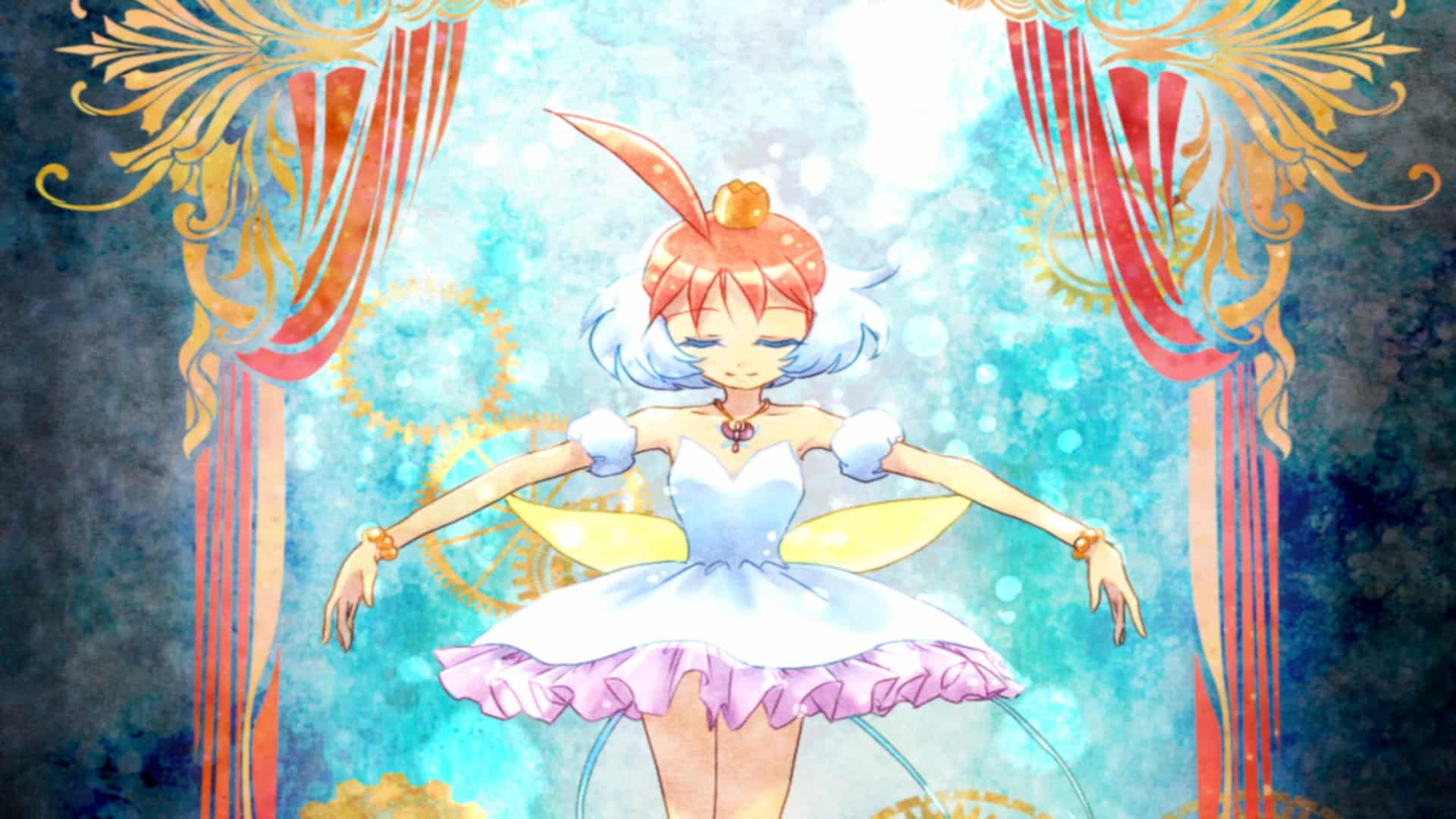
The way the main characters, Ahiru, Myuuto, Fakir, and Rue, change and grow over the narrative is what matters most. Princess Tutu is quite active in this way, and the extent to which a number of her friends evolve further distinguishes it from the stereotypical fairy tale it initially depicts.
Composition of Ahiru I consider it to be the best example of how outlandish many fictional characters can be. She is a duck that has been given to change between its primordial form, a schoolgirl taking ballet lessons, and Princess Tutu. What’s the identity crisis that develops when Ahiru tries to socialize and develop her own self-image? She’s either the princess, the girl, or the creature that ducks.
Also Read: 35 Best Magic Anime Series That You Should Watch
13. Girls’ Last Tour
Chito and Yuuri are forced to fend for themselves in the ruins of human civilization after a horrific battle. At the start of the series, Chito and Yuuri explore a deserted factory’s interior and eventually find a way out after Yuuri unintentionally starts sucking on Chito’s hand while dozing off and using the saliva to detect a breeze.
They surprise at their sight when they reach the surface and begin looking for supplies in a bomber that has crashed. Later, the girls find hot water and take a bath while seeking safety from an icy storm.
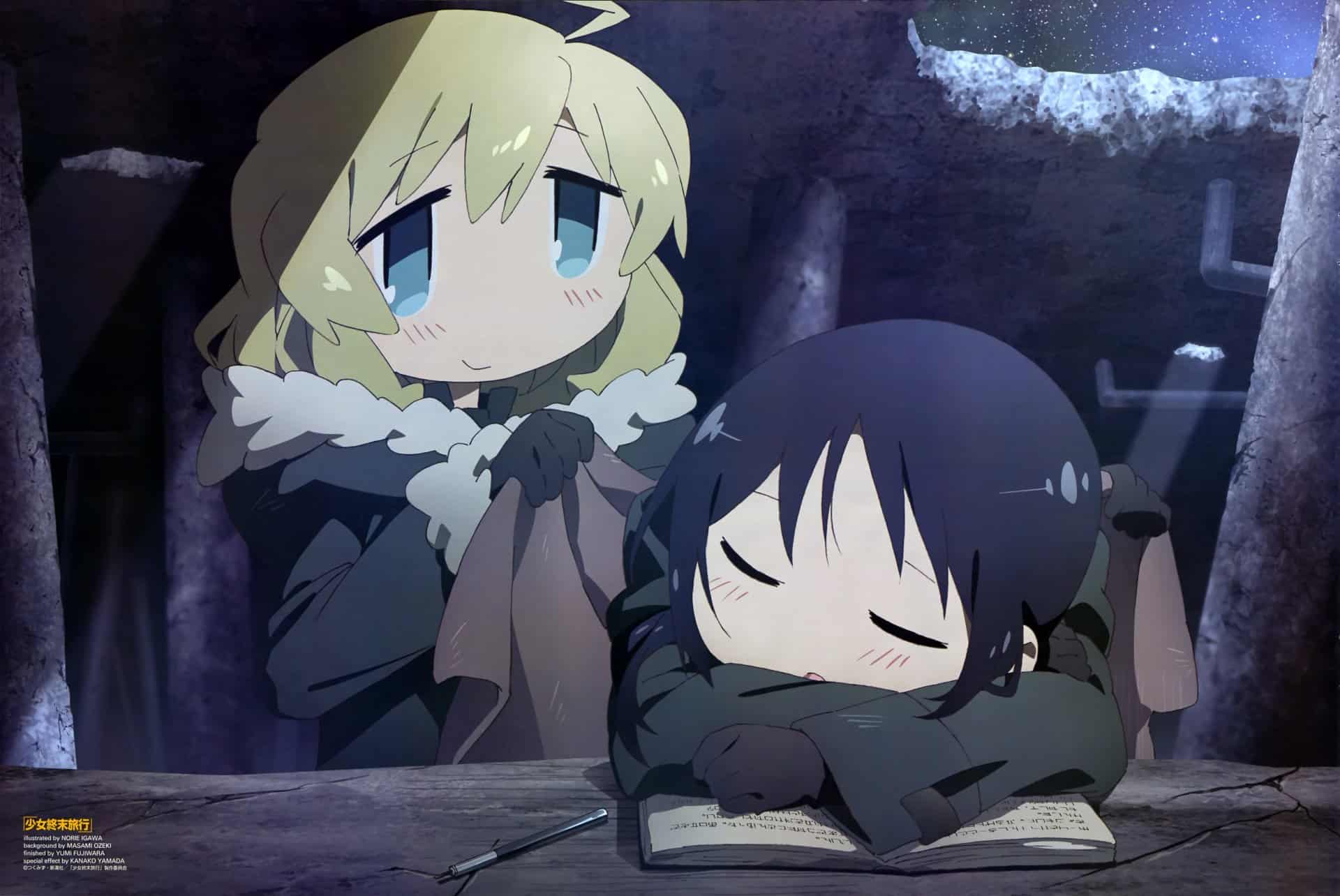
The girls roast a fish the following day after coming across it during washing their clothes, which infuriates Chitose, who becomes upset when Yuuri flames one of the reading materials she had gathered to light their fire. Chito and Yuuri continue their trek, seeking to find a way to the top levels of the huge city and come across cartographer Kanazawa.
They find an elevator, but midway through the ride, it starts to tilt, forcing Kanazawa to misplace his maps. Yuuri is able to lift his disposition, and he decides to keep creating new maps while putting the girls in charge of his camera. Chito and Yuuri make the decision to walk to the dazzling lights in the far away distance.
The exchanges between Chito and Yuuri, though initially seeming trivial given that the original text is a four-panel anime, effectively shift from cheerful to more serious subjects, such as the value of the present in an area devoid of other humans, what’s referred to as war, and attempting to make rational sense of the artifacts that the earlier civilization left behind.
Also Read: 11 Supernatural Anime To Watch That You Can Watch in July 2023

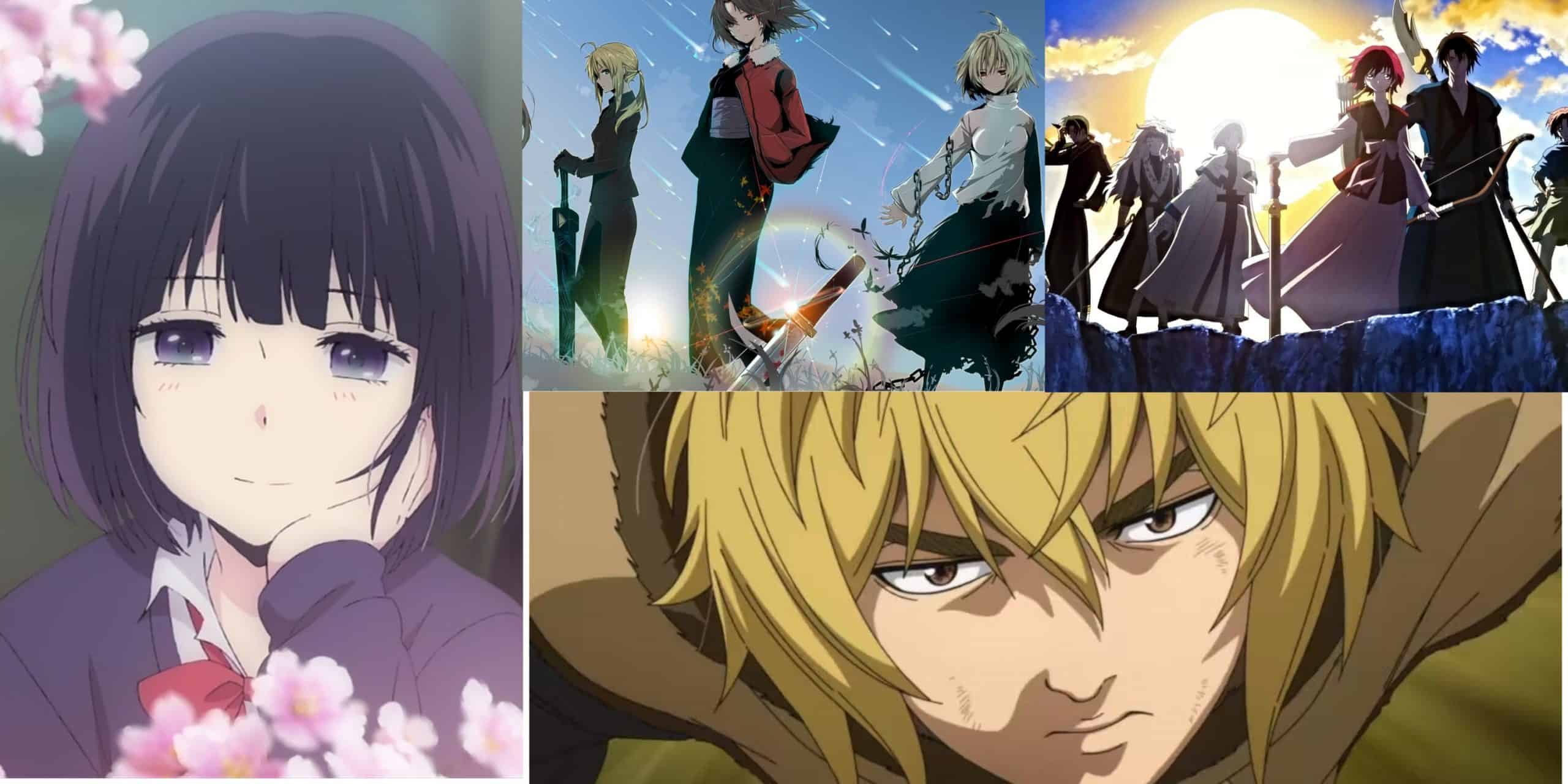



Yona of the Dawn and Garden of Sinners are NOT on HIDIVE anymore, removed earlier. The other choices here are great! 🙂